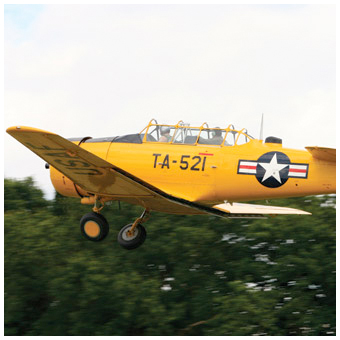
Second T-6 in six months to crash near South Walton coastline
A T-6 Texan aircraft crashed into the Gulf of Mexico off of Miramar Beach July 2. The crash happened at approximately 12:30 p.m. about 400 yards offshore near Pompano Joe’s just outside the Walton County line.
Witnesses said the plane was doing stunt maneuvers all morning in the area when it ran into trouble.
“It was doing tricks all morning, it saw there was another plane carrying a banner in the area. It noticed it but it wasn’t as if it was trying to get out of its way. You thought it was trying to do another trick and it then headed towards the water. It took a nose dive into the water. After about 30 seconds in the water it was all in flames” Amy Morris of Nashville, Tenn. stated.
The U.S. Coast Guard has vessels on the scene.
This is the second plane crash within the last six months involving a T-6 Texan WW II trainer aircraft. On March 6, 2010 Dr. Herman and Peggy Zeiger Jr., of Birmingham, perished when their T-6 Texan crashed into the gulf in South Walton County near Topsail Hill Preserve State Park.
About the T-6 Texan
The North American T-6 Texan two-place advanced trainer was the classroom for most of the Allied pilots who flew in World War II. Called the SNJ by the Navy and the Harvard by the British Royal Air Force, the AT-6 (advanced trainer) was designed as a transition trainer between basic trainers and first-line tactical aircraft. It was redesignated T-6 in 1948.
In all, the T-6 trained several hundred thousand pilots in 34 different countries over a period of 25 years. A total of 15,495 of the planes were made. Though most famous as a trainer, the T-6 Texan also won honors in World War II and in the early days of the Korean War.
The Texan was an evolution of the company’s BC-1 basic combat trainer, which was first produced for the U.S. Army Air Corps with fixed landing gear in 1937 under a contract that called for 174 planes. North American Aviation designed the NA-49 prototype as a low-cost trainer with all the characteristics of a high-speed fighter.
Although not as fast as a fighter, it was easy to maintain and repair, had more maneuverability and was easier to handle. A pilot’s airplane, it could roll, Immelmann, loop, spin, snap and vertical roll. It was designed to give the best possible training in all types of tactics, from ground strafing to bombardment and aerial dogfighting. It contained such versatile equipment as bomb racks, blind flying instrumentation, gun and standard cameras, fixed and flexible guns, and just about every other device that military pilots had to operate.
Information courtesy boeing.com
